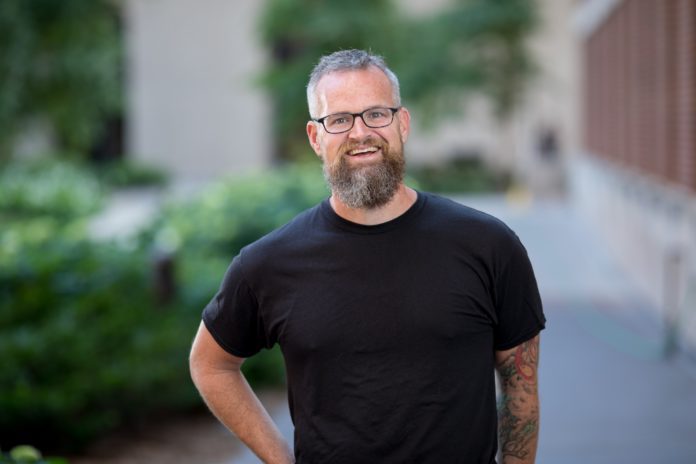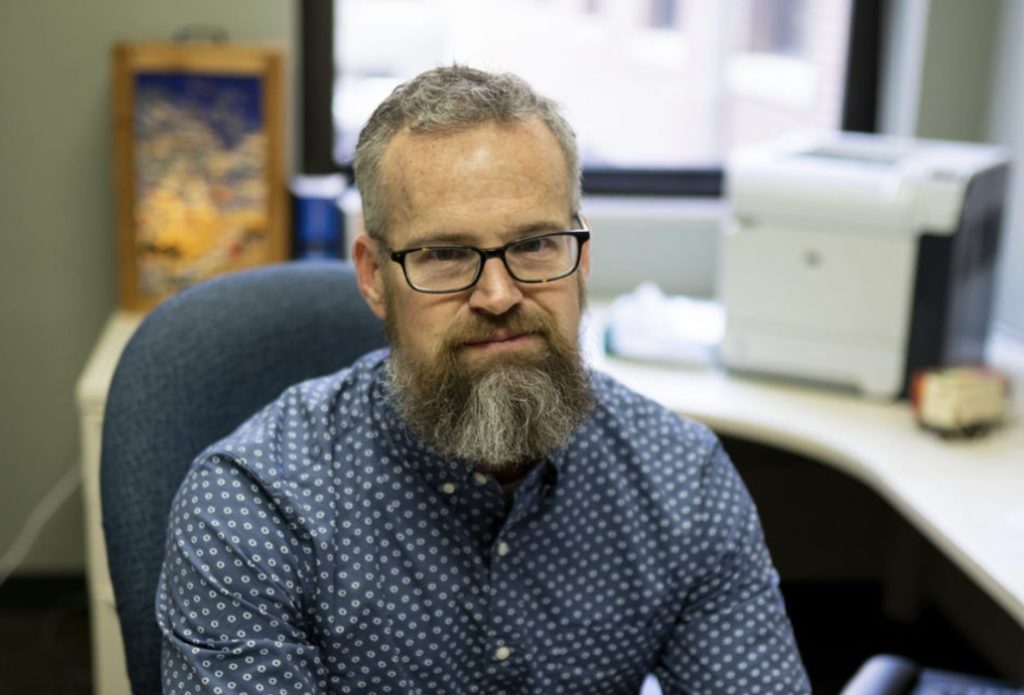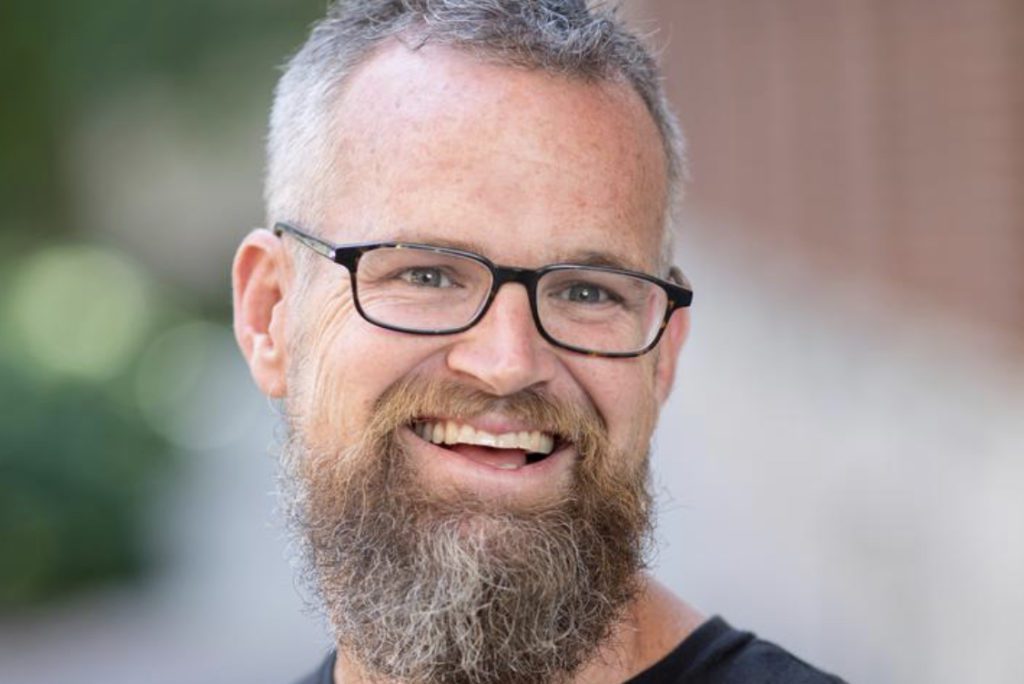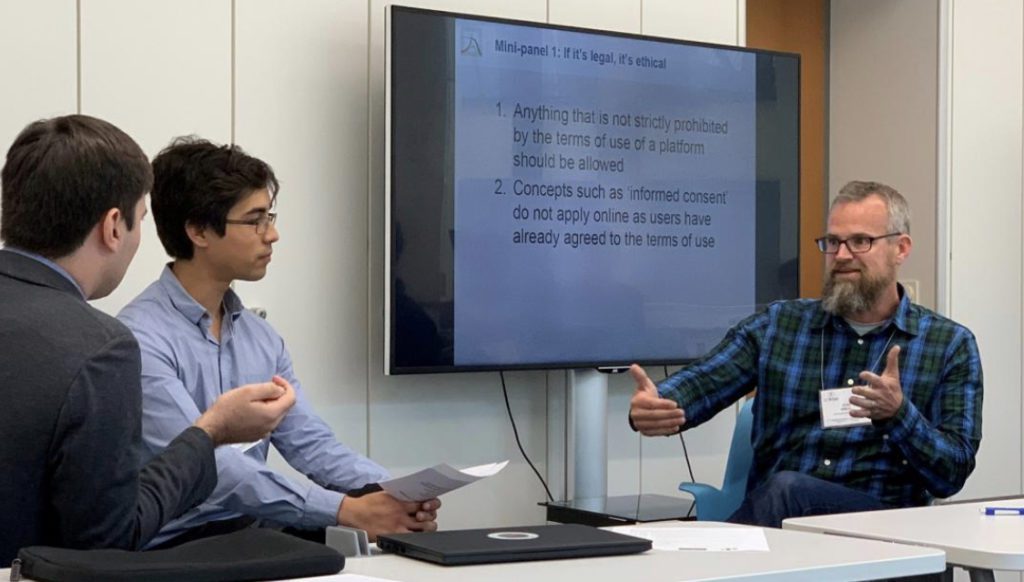Contributed with permission by the author Jude Mikal, PhD.
Jude Mikal is a father of three and a research scientist at the University of Minnesota-Twin Cities School of Public Health, focusing on on stress, health and Internet / social media use.
He’s currently conducting a research study on how social media is impacting mental health and compliance with CDC recommendations following the COVID-19 outbreak.
This article was originally published in MinnesotaParent.com:
As I hide in my basement for three hours of uninterrupted work time, my wife is upstairs managing an endless series of Zoom check-ins for my fifth-grader whose schoolwork has just picked up again after a three-week hiatus.
Advertisement
To boot, our youngest is in his final year of pre-school and so we’re also managing bi-weekly Zoom meetings for his class that can only be described as herding cats.
In 20 short minutes, it will be my turn to move upstairs, to allow my wife to cloister herself off in our recently remodeled basement to attend to her own work obligations — and I’ll take up supervising the kids’ education, making sure everyone completes an endless series of worksheets and online homework assignments designed to keep kids at grade level, despite the fact that the world is collapsing around them.
Yet if there’s one thing that COVID-19 has shown us, it’s that so much of what we considered static is actually dynamic. Institutions didn’t transform before, because we never demanded it.
But seemingly overnight, schools, universities, businesses, hospitals and mental-health clinics have transformed to meet the need for social distancing, leveraging technology in new and unprecedented ways.
This is exceptionally true for our educators. And the transformation of our children’s education has been so dramatic — the task so herculean — that it almost seems unfair to ask anything more. But as I lord over my fifth-grader on his 70,000th worksheet of the morning, I find myself wondering: Is this really the best we can do?
Teachers have so long designed for in-person and en masse learning, that simply migrating standardized materials online seems like a missed opportunity.
My oldest daughter is currently a freshman at the University of Minnesota, and was home schooled between the ages of 8-12, and again from 13-14. In our house, we followed an unschooling approach — a student-driven structure that centers on innate motivations, on discovery and on the unique interests of each child.
Advertisement
In this model, parents aren’t teachers, they’re guides. We don’t impart knowledge onto a student, but direct our children toward the resources at their disposal to guide their own discoveries based on the questions they have about how the world works.
The approach teaches discovery and encourages imagination. It teaches critical thinking skills and independence. And perhaps most important, it’s a lot less work — an ideal setup for parents who are trying to manage work at home demands, while helping their children adhere to a set of rather arbitrary grade-level standards.
As we look ahead to the weeks of at home learning that will take place over the remainder of the academic year, it’s important for teachers and parents to remember that institutionalized education was designed for groups — not individuals, so that a single educator could meet the needs of many students with different educational needs and backgrounds.
With adult-to-child ratios hovering much closer to 1:1 these days, adults have the opportunity to redesign education to meet the needs of a single child, to capitalize on their interests and to find opportunities for learning and discovery that span grade levels and subjects areas. It’s a chance to provide that apprenticeship to adulthood that schools are often trying to emulate.
To that end, I’ve created a list of suggestions from an unschooling parent and teacher that are designed to transform face-to-face education not just to online education, but to family-focused, child-centered, interest-driven, less time costly, emotionally supportive education.
PARENTS
- Remember that talking to your children is an integral part of their education. They don’t get very much one-on-one time in traditional schools. Count conversations as school time.
- Part of adulthood is household management. Try teaching your children a new chore. Make them responsible for that chore every day for a week. Next week add another and count that as school, too.
- Grab a coffee and a donut and take the kids out into nature as much as possible. Nature preserves or historical landmarks often have placards and information that can help you learn about your neighborhood and can spark new interests in nature, conservation or history. If not, at least you got a donut.
- When you say no to devices, don’t suggest alternatives. It’s OK for kids to be bored. Fighting and whining are just pitstops on the way to creativity — and creativity is unteachable.
- Use TVs and iPads to turn your kids on to learning. Programming is a much sought-after skill. And YouTube abounds with tutorials on knitting, baking, car repair and just about anything else you can imagine. Watch a little, then do a little.
TEACHERS
● Social relationships are integral to health, and kids are lonely. They went from seeing friends (including kids they don’t like) daily to seeing nobody but parents and siblings. Use school time to let kids connect again: Make small groups in Zoom, and let them talk. Even if they go off task, that connection is what they need to survive.
● Don’t assign worksheets: Assign reading. Reading lets kids become lifelong learners. Let them pick a subject and encourage them to hunt (supervised) online for information. That’s the future of learning.
● Research tells us that passive Internet use is bad. Avoid lectures and keep instruction short. Encourage remote group work using Google docs. Kids are starving for socialization and interaction.
● Use your assignments to support parents. Incorporate chores into lessons. Assign interviews and life-history essays on grandparents or family living in different parts of the country. Assign field trips in nature or even around the neighborhood.
● Acknowledge that we’re living in strange times, and know that kids’ worlds have been turned upside down, too. Offer support and use lessons to help them build relationships.
COVID-19 will end and life will eventually return to a non-crisis state. Skills missed in the 2019-2020 academic year can be taught next year, or even the year after. Right now, the focus should be on kids’ mental health and support structures.
We have the technology to do even more to transform education. And, who knows, maybe some of those transformations will be worth keeping even after the world has returned to normal…ish.



![Netflix’s Bold Bet on ‘Just A Dash’ Sparks Buzz: Why Matty Matheson’s Wild Cooking Show Is the Flavor Ride LA Craves [TRAILER] Netflix brings Matty Matheson Just A Dash to global audiences](https://dailyovation.com/wp-content/uploads/2025/12/Screenshot-2025-12-09-at-2.10.32-PM-218x150.jpg)






![The Rise of Wisconsin Rye Whiskey: A Flavorful Story of Community and Craft [Exclusive Interview with John Mleziva] Explore the rise of Wisconsin rye whiskey, its Driftless flavor, and the community-driven craft behind State Line Distillery’s celebrated five-year release.](https://dailyovation.com/wp-content/uploads/2025/12/Screenshot-2025-12-02-at-8.44.22-PM-218x150.jpg)








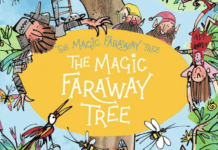
![Get Your Indie Movie Made (Responsibly): Jeff Caruso of Wrapbook Leads the AFM 2025 Film Finance Conversation [Exclusive Interview] American Film Market](https://dailyovation.com/wp-content/uploads/2025/11/AmericanFilmMarket2025-1-218x150.jpg)





